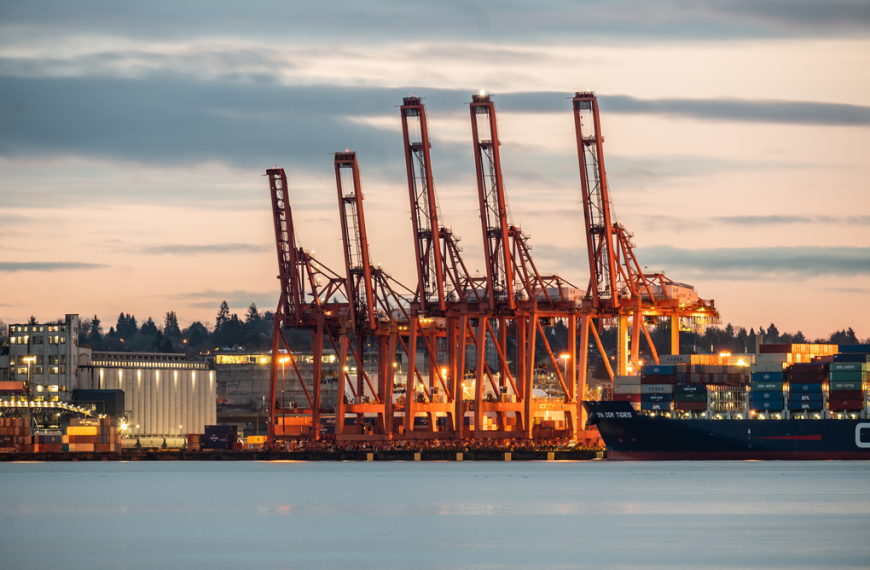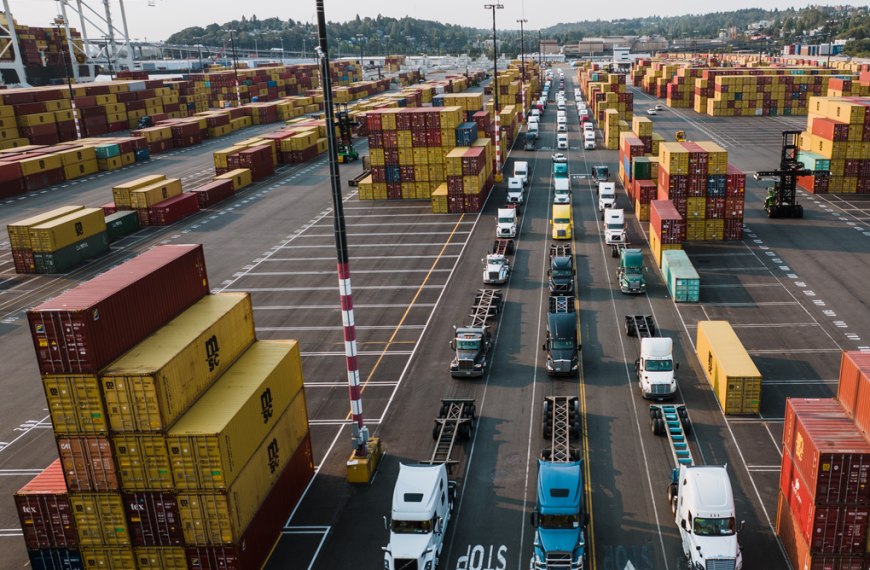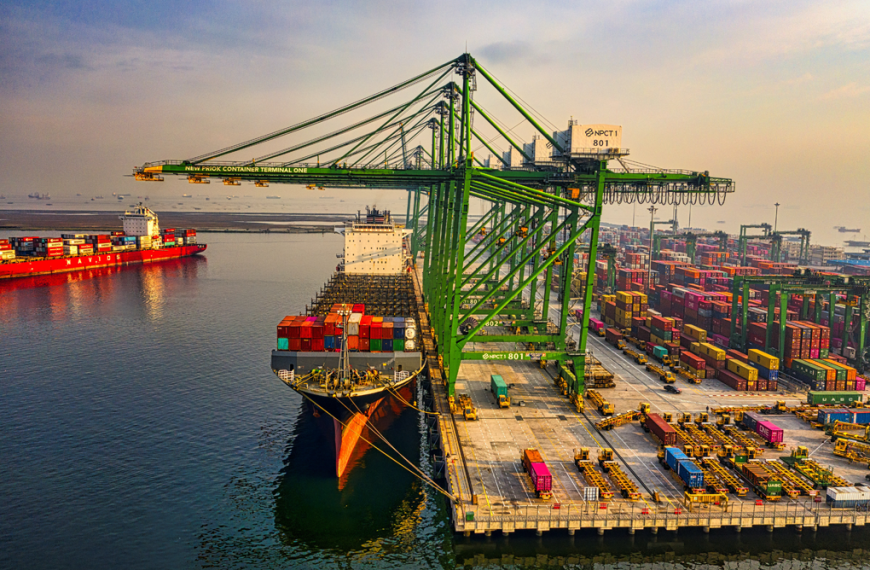Freight Rate: Unleash powerful strategies for shippers and carriers to conquer the industry. Discover the ultimate playbook on winning the freight rate game, optimizing your operations, and outperforming competitors. From digital transformation to last-mile excellence, learn game-changing tactics to revolutionize your freight rate strategies.
Master the art of negotiation, leverage advanced technologies, and ensure top-notch security. Explore the world of freight brokerage, logistics, and forwarders to stay ahead of the curve. Whether it’s sea freight or air freight, elevate your performance and dominate the market. Don’t settle for average—embrace these proven strategies and rise to the top. Get the edge you need today!
- Understanding Market Dynamics in the World of Freight Transportation
- 1. Digital Freight Forwarding: Embrace the Power of Technology
- 2. Freight Transportation Security: Safeguard Your Cargo
- 3. Freight Brokerage: Unlock Efficiency and Cost Savings
- 4. Last-Mile Delivery: Exceed Customer Expectations
- 5. Freight Logistics: Streamline Operations for Success
- 6. The Role of Freight Forwarders in Sea Freight
- 7. Air Freight: Speed, Efficiency, and Global Reach
- Effective Negotiation Techniques in the World of Freight Transportation
- 1. Understand the Freight Rate Landscape
- 2. Build Strong Relationships with Freight Forwarders
- 3. Leverage Digital Freight Forwarding Solutions
- 4. Highlight Value-Added Services and Expertise
- 5. Demonstrate Flexibility and Collaboration
- 6. Utilize Data and Analytics
- 7. Stay Informed and Continuously Improve
- Optimizing Transportation Planning: Unlocking Efficiency in the World of Freight Transportation
- 1. Embrace Digital Freight Forwarding for Streamlined Operations
- 2. Leverage Freight Brokerage Services for Competitive Rates
- 3. Prioritize Freight Transportation Security for Peace of Mind
- 4. Optimize Last-Mile Delivery for Customer Satisfaction
- 5. Streamline Freight Logistics for Efficiency and Cost Savings
- 6. Collaborate with Freight Forwarders for Specialized Services
- 7. Embrace Data Analytics for Informed Decision-Making
- Embracing Technology Solutions: Unlocking Success in the World of Freight Transportation
- 1. Digital Freight Forwarding: Streamlining the Journey
- 2. Freight Transportation Security: Safeguarding Your Cargo
- 3. Freight Brokerage: Finding the Right Partners
- 4. Last-Mile Delivery Optimization: Exceeding Customer Expectations
- 5. Freight Logistics: Enhancing Efficiency and Visibility
- 6. Collaboration with Freight Forwarders: Tapping into Expertise
- 7. Continuous Learning and Adaptation: Staying Ahead of the Curve
- Building Collaborative Partnerships: Unleashing Success in the World of Freight Transportation
- 1. Embrace Digital Freight Forwarding for Seamlessness
- 2. Forge Collaborative Relationships with Freight Forwarders
- 3. Prioritize Freight Transportation Security for Peace of Mind
- 4. Optimize Last-Mile Delivery for Customer Delight
- 5. Harness the Power of Freight Brokerage
- 6. Streamline Freight Logistics for Efficiency
- 7. Embrace Multimodal Solutions for Flexibility
- Implementing Cost-Saving Measures: Unlocking Efficiency in the World of Freight Transportation
- 1. Embrace Digital Freight Forwarding for Streamlined Operations
- 2. Leverage Freight Transportation Security Solutions
- 3. Optimize Freight Logistics for Efficiency
- 4. Utilize Freight Brokerage Services for Competitive Rates
- 5. Embrace Last-Mile Delivery Solutions for Customer Satisfaction
- 6. Consolidate Shipments for Economies of Scale
- 7. Explore Sea Freight and Air Freight Alternatives
- Navigating Regulatory and Compliance Challenges: Smooth Sailing in the World of Freight Transportation
- 1. Stay Updated with Freight Transportation Regulations
- 2. Enhance Freight Transportation Security Measures
- 3. Leverage Digital Freight Forwarding for Documentation Efficiency
- 4. Partner with Reputable Freight Forwarders
- 5. Implement Effective Freight Logistics Management
- 6. Conduct Regular Compliance Audits
- 7. Seek Professional Legal and Regulatory Advice
- Frequently Asked Questions (FAQs)
- Related Articles

Understanding Market Dynamics in the World of Freight Transportation
In the fast-paced world of freight transportation, mastering the art of navigating market dynamics is essential for shippers and carriers aiming to win the freight rate game. By comprehending and adapting to these dynamics, you can optimize your operations, secure competitive freight rates, and deliver exceptional service.
In this article, we’ll explore the key market dynamics that shape the world of freight transportation and provide actionable strategies to help you stay ahead of the curve.
1. Digital Freight Forwarding: Embrace the Power of Technology
In today’s digital age, embracing digital freight forwarding is a game-changer. Leverage cutting-edge technologies and platforms to streamline your logistics processes, enhance visibility, and improve collaboration across the supply chain. From automated documentation to real-time tracking, digital solutions can revolutionize your freight operations.
2. Freight Transportation Security: Safeguard Your Cargo
Ensuring freight transportation security is paramount in an ever-evolving landscape. Stay one step ahead of potential risks by implementing robust security measures. Embrace technologies like IoT-enabled tracking, tamper-proof packaging, and data-driven risk assessment tools to protect your cargo and gain the trust of your customers.
3. Freight Brokerage: Unlock Efficiency and Cost Savings
Freight brokerage acts as a strategic intermediary in connecting shippers and carriers. Collaborate with experienced freight brokers who possess industry expertise and vast networks. They can help you optimize routes, negotiate competitive rates, and find mutually beneficial partnerships, resulting in increased efficiency and cost savings.
4. Last-Mile Delivery: Exceed Customer Expectations
The final leg of the delivery journey, last-mile delivery, is critical for customer satisfaction. Embrace innovative solutions such as crowdshipping, smart lockers, and optimized route planning to ensure prompt and convenient deliveries. By enhancing your last-mile capabilities, you can differentiate yourself from competitors and create exceptional customer experiences.
5. Freight Logistics: Streamline Operations for Success
Efficient freight logistics is the backbone of successful transportation operations. Streamline your processes by optimizing supply chain management, improving inventory control, and implementing advanced warehouse management systems. Enhancing your logistics capabilities leads to improved operational efficiency and better cost management.
6. The Role of Freight Forwarders in Sea Freight
Sea freight plays a vital role in global trade. Collaborate with experienced freight forwarders who specialize in sea freight to navigate the complexities of international shipping. They can handle customs procedures, provide multimodal transportation options, and ensure compliance with regulations, enabling smooth and cost-effective sea freight operations.
7. Air Freight: Speed, Efficiency, and Global Reach
When time is of the essence, air freight becomes a crucial transportation mode. Leverage the speed, reliability, and global reach of air freight services to meet tight deadlines and transport time-sensitive goods. Explore partnerships with airlines and air freight specialists to optimize your air freight operations.
Understanding the market dynamics in the world of freight transportation is pivotal to your success. By embracing digital transformation, prioritizing security, leveraging freight brokerage services, enhancing last-mile delivery, optimizing freight logistics, and collaborating with experienced freight forwarders, you can position yourself for victory in the freight rate game. Stay agile, adapt to changing trends, and implement the strategies that will set you apart from the competition.

Effective Negotiation Techniques in the World of Freight Transportation
By employing strategic negotiation tactics and leveraging industry knowledge, you can gain a competitive edge and achieve success in the freight rate game. In this article, we will delve into key strategies and techniques that will empower you to negotiate effectively and achieve your desired outcomes.
1. Understand the Freight Rate Landscape
Before entering into negotiations, it is essential to gain a comprehensive understanding of the freight rate landscape. Research current market trends, industry benchmarks, and factors that influence pricing, such as fuel costs, capacity, and seasonal fluctuations. Armed with this knowledge, you can approach negotiations with confidence and make informed decisions.
2. Build Strong Relationships with Freight Forwarders
Establishing strong relationships with reputable freight forwarders can be a game-changer in negotiation processes. Collaborating with experienced professionals who have deep industry knowledge and vast networks can provide valuable insights and access to competitive rates. By forging long-term partnerships, you can create mutually beneficial arrangements that drive efficiency and cost savings.
3. Leverage Digital Freight Forwarding Solutions
Digital freight forwarding platforms offer a wealth of advantages in negotiations. Embrace technology-driven solutions that provide real-time visibility, streamline processes, and facilitate seamless communication between stakeholders. By leveraging digital platforms, you can enhance your negotiation power, optimize freight rates, and gain a competitive advantage in the dynamic freight transportation landscape.
4. Highlight Value-Added Services and Expertise
During negotiations, emphasize the value-added services and expertise your organization brings to the table. Showcase your capabilities in areas such as freight transportation security, last-mile delivery excellence, and efficient freight logistics. By highlighting your unique strengths, you position yourself as a valuable partner, justifying competitive rates and distinguishing yourself from competitors.
5. Demonstrate Flexibility and Collaboration
Negotiation is a two-way street, and flexibility plays a pivotal role. Demonstrate a willingness to collaborate and find mutually beneficial solutions. Explore options like bundling shipments, optimizing routes, or adjusting delivery schedules to create win-win scenarios. By fostering a spirit of collaboration, you build strong relationships with counterparts, fostering long-term partnerships.
6. Utilize Data and Analytics
In today’s data-driven world, utilizing data and analytics can provide a significant advantage in negotiations. Leverage historical shipment data, market insights, and predictive analytics to strengthen your negotiation position. Data-backed arguments and insights demonstrate your preparedness and enhance your credibility during negotiations.
7. Stay Informed and Continuously Improve
The freight transportation industry is ever-evolving, and staying informed about market dynamics, regulatory changes, and emerging trends is crucial. Continuously invest in professional development, attend industry events, and engage in networking opportunities to expand your knowledge base. By remaining updated and adapting to changes, you position yourself as a knowledgeable negotiator, capable of navigating the evolving landscape.
By implementing these effective negotiation techniques, shippers and carriers can maximize their chances of securing favorable freight rates, building strong partnerships, and thriving in the competitive world of freight transportation.
Embrace strategic approaches, leverage digital solutions, and prioritize collaboration to unlock success in the freight rate game. Remember, effective negotiation is a skill that can be honed and refined over time. With dedication, perseverance, and a focus on continuous improvement, you can elevate your negotiation prowess and achieve sustainable success in the industry.

Optimizing Transportation Planning: Unlocking Efficiency in the World of Freight Transportation
Efficient transportation planning is the cornerstone of success in the dynamic world of freight transportation. Shippers and carriers need to navigate a multitude of factors, including freight rates, logistics complexities, and customer expectations. By implementing strategic planning strategies, leveraging digital solutions, and optimizing freight operations, you can gain a competitive advantage and maximize profitability. In this article, we will explore key strategies for optimizing transportation planning and uncover the secrets to winning the freight rate game.
1. Embrace Digital Freight Forwarding for Streamlined Operations
Digital freight forwarding solutions have revolutionized the industry, enabling streamlined operations and improved efficiency. Embrace innovative platforms that offer end-to-end visibility, automated documentation, and seamless communication between stakeholders. By leveraging these technologies, you can optimize transportation planning, enhance collaboration, and reduce costs.
2. Leverage Freight Brokerage Services for Competitive Rates
Freight brokerage plays a crucial role in securing competitive freight rates and finding the right carriers for your shipments. Collaborate with experienced freight brokers who have extensive networks and in-depth market knowledge. They can negotiate favorable rates, optimize freight routes, and provide valuable insights into market dynamics.
3. Prioritize Freight Transportation Security for Peace of Mind
Freight transportation security is paramount in protecting your cargo and ensuring customer satisfaction. Implement robust security measures, such as GPS tracking, tamper-proof packaging, and cargo insurance. By prioritizing security, you can minimize the risk of theft, damage, or loss, instilling confidence in your customers and improving your reputation.
4. Optimize Last-Mile Delivery for Customer Satisfaction
The final mile of the delivery journey, known as last-mile delivery, is a critical touchpoint for customer satisfaction. Implement strategies such as route optimization, real-time tracking, and alternative delivery options like lockers or local pickup points. By providing reliable and convenient last-mile experiences, you can exceed customer expectations and gain a competitive edge.
5. Streamline Freight Logistics for Efficiency and Cost Savings
Efficient freight logistics are essential for optimizing transportation planning. Implement advanced inventory management systems, embrace lean principles, and optimize warehouse operations. By minimizing handling, reducing stockouts, and improving order fulfillment, you can streamline your logistics processes, reduce costs, and enhance customer satisfaction.
6. Collaborate with Freight Forwarders for Specialized Services
In the realm of sea freight and air freight, partnering with experienced freight forwarders can unlock specialized services and expertise. Freight forwarders navigate complex regulations, handle customs procedures, and optimize multimodal transportation. By collaborating with them, you can ensure seamless international shipments, efficient documentation, and compliance with trade regulations.
7. Embrace Data Analytics for Informed Decision-Making
Data analytics is a powerful tool for optimizing transportation planning. Leverage historical shipment data, market trends, and predictive analytics to make informed decisions. By analyzing data, you can identify patterns, optimize routes, predict demand, and improve overall operational efficiency.
By implementing these strategies and leveraging the advancements in digital freight forwarding, freight brokerage, last-mile delivery, and freight logistics, you can optimize transportation planning and gain a competitive advantage in the freight rate game.
Embrace innovation, prioritize customer satisfaction, and continuously adapt to the evolving landscape. By doing so, you will position yourself for success in the ever-changing world of freight transportation.

Embracing Technology Solutions: Unlocking Success in the World of Freight Transportation
In today’s fast-paced world of freight transportation, embracing technology solutions is no longer an option; it’s a necessity. Shippers and carriers must adapt to the evolving landscape and leverage digital advancements to stay ahead of the competition.
By incorporating innovative tools, such as digital freight forwarding, freight transportation security systems, and last-mile delivery optimization, you can optimize operations, improve efficiency, and ultimately win the freight rate game. In this article, we will explore key strategies for embracing technology solutions and how they can revolutionize the world of freight transportation.
1. Digital Freight Forwarding: Streamlining the Journey
Digital freight forwarding platforms have revolutionized the industry by streamlining the end-to-end process. These platforms provide a single interface for managing shipments, tracking cargo in real-time, and simplifying documentation. By embracing digital freight forwarding, shippers and carriers can experience seamless communication, increased visibility, and improved collaboration with freight forwarders.
2. Freight Transportation Security: Safeguarding Your Cargo
Freight transportation security is of paramount importance to protect your cargo from potential risks and threats. Implement advanced security systems, such as GPS tracking, geofencing, and temperature monitoring, to ensure the safety and integrity of your shipments. By investing in robust security measures, you can gain peace of mind and build trust with your customers.
3. Freight Brokerage: Finding the Right Partners
Navigating the complex world of freight transportation requires expertise and industry connections. Engage with reliable freight brokers who have extensive networks and in-depth knowledge of market trends. Freight brokers can help you find the most competitive freight rates, negotiate contracts, and optimize your logistics operations.
4. Last-Mile Delivery Optimization: Exceeding Customer Expectations
Last-mile delivery, the final leg of the shipment journey, plays a critical role in customer satisfaction. Embrace innovative solutions like route optimization software, autonomous delivery vehicles, and alternative delivery options such as lockers or pickup points. By optimizing last-mile delivery, you can provide faster, more reliable service, delighting your customers and gaining a competitive edge.
5. Freight Logistics: Enhancing Efficiency and Visibility
Efficient freight logistics are essential for smooth operations and cost savings. Leverage technology solutions like warehouse management systems, inventory tracking software, and automated order fulfillment processes. By optimizing your freight logistics, you can minimize errors, reduce lead times, and improve overall efficiency.
6. Collaboration with Freight Forwarders: Tapping into Expertise
Freight forwarders play a crucial role in facilitating international shipments, especially for sea freight and air freight. Collaborate with experienced freight forwarders who have extensive knowledge of customs regulations, international trade laws, and multimodal transportation. By leveraging their expertise, you can navigate complex logistics seamlessly and expand your global reach.
7. Continuous Learning and Adaptation: Staying Ahead of the Curve
In the ever-changing world of freight transportation, continuous learning and adaptation are key. Stay updated on emerging technologies, industry trends, and regulatory changes. Engage in industry conferences, networking events, and webinars to expand your knowledge and stay ahead of the curve. By embracing a culture of learning, you can continuously improve your operations and maintain a competitive advantage.
By embracing technology solutions in freight transportation, shippers and carriers can unlock new opportunities, improve efficiency, and ultimately succeed in the freight rate game. Embrace digital innovations, prioritize security and last-mile optimization, and foster collaboration with freight forwarders. Continuously adapt, learn, and leverage the power of technology to navigate the evolving landscape and achieve long-term success.
Building Collaborative Partnerships: Unleashing Success in the World of Freight Transportation
In the competitive realm of freight transportation, building collaborative partnerships is the secret to unlocking success. Shippers and carriers can no longer operate in isolation; they must forge strong alliances with key stakeholders in the industry. By cultivating strategic relationships with freight forwarders, embracing digital solutions, and prioritizing last-mile delivery, you can revolutionize your operations and emerge victorious in the freight rate game. In this article, we will delve into the strategies for building collaborative partnerships and how they can pave the way to triumph.
1. Embrace Digital Freight Forwarding for Seamlessness
Digital freight forwarding is a game-changer in the world of freight transportation. Embrace innovative platforms that offer end-to-end visibility, automated documentation, and streamlined communication between shippers, carriers, and freight forwarders. By leveraging these digital solutions, you can optimize operations, improve efficiency, and achieve cost savings.
2. Forge Collaborative Relationships with Freight Forwarders
Freight forwarders are your key allies in navigating the complexities of international shipping. Build strong partnerships with reputable freight forwarders who possess extensive knowledge of customs regulations, trade laws, and transportation networks. Collaborate closely with them to unlock the benefits of their expertise, secure competitive freight rates, and ensure smooth customs clearance.
3. Prioritize Freight Transportation Security for Peace of Mind
Freight transportation security is a critical aspect of maintaining customer trust and protecting your valuable cargo. Implement comprehensive security measures such as GPS tracking, tamper-proof packaging, and secure warehouse facilities. By prioritizing security, you can mitigate risks, prevent theft or damage, and instill confidence in your customers.
4. Optimize Last-Mile Delivery for Customer Delight
Last-mile delivery is the final touchpoint that can make or break the customer experience. Optimize this crucial stage by leveraging technology-driven solutions such as route optimization, real-time tracking, and alternative delivery options like lockers or local pickup points. By exceeding customer expectations with reliable and convenient last-mile delivery, you can gain a competitive edge.
5. Harness the Power of Freight Brokerage
Freight brokerage services play a vital role in securing competitive freight rates and finding the right carriers for your shipments. Collaborate with experienced freight brokers who have strong industry connections and extensive market knowledge. They can negotiate favorable rates, optimize freight routes, and provide valuable insights into market dynamics.
6. Streamline Freight Logistics for Efficiency
Efficient freight logistics are the backbone of successful transportation operations. Implement advanced inventory management systems, embrace lean principles, and optimize warehouse processes. By minimizing bottlenecks, reducing handling times, and improving order fulfillment accuracy, you can enhance efficiency and reduce costs.
7. Embrace Multimodal Solutions for Flexibility
In the dynamic world of freight transportation, embracing multimodal solutions can provide flexibility and agility. Seamlessly combine sea freight and air freight options to optimize cost and delivery speed. Work closely with freight forwarders who specialize in different modes of transport to identify the most efficient and cost-effective solutions for your shipments.
By building collaborative partnerships, embracing digital freight forwarding, prioritizing security and last-mile delivery, and optimizing freight logistics, you can elevate your position in the freight rate game. Cultivate strong relationships with freight forwarders, leverage technology, and adapt to the ever-evolving landscape of freight transportation.
With a collaborative mindset and strategic alliances, you can emerge as a winner in the competitive world of freight transportation.
Implementing Cost-Saving Measures: Unlocking Efficiency in the World of Freight Transportation
In the fast-paced world of freight transportation, implementing cost-saving measures is crucial for shippers and carriers aiming to stay competitive. By optimizing expenses and finding innovative ways to reduce costs, you can improve your freight rates and maximize profitability. In this article, we will explore effective strategies for implementing cost-saving measures in the world of freight transportation, from leveraging digital freight forwarding to embracing last-mile delivery solutions.
1. Embrace Digital Freight Forwarding for Streamlined Operations
Digital freight forwarding is revolutionizing the industry by simplifying complex processes and enhancing efficiency. By utilizing advanced platforms, you can benefit from real-time visibility, automated documentation, and streamlined communication with freight forwarders. This enables you to optimize operations, reduce manual errors, and ultimately save costs.
2. Leverage Freight Transportation Security Solutions
Freight transportation security is vital for protecting your cargo and minimizing potential losses. Implement state-of-the-art security measures such as GPS tracking, surveillance systems, and secure packaging. These measures not only safeguard your shipments but also mitigate risks, minimize insurance premiums, and reduce financial liabilities.
3. Optimize Freight Logistics for Efficiency
Efficient freight logistics can significantly impact your bottom line. Employ advanced logistics management systems to streamline warehouse operations, inventory tracking, and order fulfillment processes. By minimizing delays, improving accuracy, and reducing handling costs, you can achieve substantial savings.
4. Utilize Freight Brokerage Services for Competitive Rates
Freight brokerage services offer valuable insights and connections to secure competitive freight rates. Collaborate with experienced brokers who possess a deep understanding of the market and extensive carrier networks. They can negotiate favorable contracts, identify cost-effective routes, and optimize load consolidation to optimize your expenses.
5. Embrace Last-Mile Delivery Solutions for Customer Satisfaction
Last-mile delivery can be a significant cost driver, but it also presents an opportunity to differentiate your services. Implement efficient route planning, leverage local delivery partnerships, and explore alternative options like crowdshipping or lockers. By optimizing last-mile delivery, you can enhance customer satisfaction while reducing transportation costs.
6. Consolidate Shipments for Economies of Scale
Consolidating shipments can lead to significant cost savings. Collaborate with freight forwarders or utilize freight consolidation services to combine multiple shipments into a single container or transport mode. This approach minimizes transportation costs per unit and maximizes efficiency.
7. Explore Sea Freight and Air Freight Alternatives
Choosing the most suitable transport mode can result in substantial savings. Evaluate the nature of your shipments and consider utilizing sea freight or air freight alternatives when appropriate. Sea freight is often more cost-effective for bulky or non-time-sensitive goods, while air freight offers speed and efficiency for urgent or high-value shipments.
By implementing these cost-saving measures, shippers and carriers can optimize their freight rates and enhance their competitiveness. Embrace digital solutions, prioritize security, streamline logistics, and explore alternative transportation options. By continuously seeking innovative ways to reduce costs, you can achieve long-term success in the ever-evolving world of freight transportation.
Navigating Regulatory and Compliance Challenges: Smooth Sailing in the World of Freight Transportation
In the complex landscape of freight transportation, navigating regulatory and compliance challenges is paramount for shippers and carriers. Adhering to industry regulations and meeting compliance standards not only ensures smooth operations but also protects your reputation and minimizes risks. In this article, we will explore effective strategies for successfully navigating regulatory and compliance challenges, from understanding freight transportation security to leveraging digital freight forwarding solutions.
1. Stay Updated with Freight Transportation Regulations
The world of freight transportation is constantly evolving, with new regulations and compliance requirements emerging. Stay informed and updated on industry regulations related to customs, safety, documentation, and environmental standards. Regularly review and adapt your processes to meet the latest regulatory changes and avoid penalties or disruptions.
2. Enhance Freight Transportation Security Measures
Freight transportation security is a critical aspect of regulatory compliance. Implement robust security measures to safeguard your shipments and prevent unauthorized access or tampering. Utilize technologies such as GPS tracking, secure packaging, and access control systems to ensure the integrity and safety of your cargo.
3. Leverage Digital Freight Forwarding for Documentation Efficiency
Digital freight forwarding solutions offer streamlined documentation processes, reducing the risk of errors and delays. Embrace digital platforms that provide automated document generation, electronic signatures, and secure data exchange. This not only enhances compliance but also improves operational efficiency and reduces administrative costs.
4. Partner with Reputable Freight Forwarders
Collaborating with reputable freight forwarders is crucial for compliance success. Choose partners with a strong track record in adhering to regulations and meeting compliance standards. They can provide valuable guidance on navigating complex customs procedures, trade restrictions, and documentation requirements.
5. Implement Effective Freight Logistics Management
Efficient freight logistics management plays a key role in ensuring compliance. Utilize advanced logistics management systems to track and monitor shipments, manage inventory, and optimize transportation routes. This enables you to meet delivery timelines, maintain accurate records, and address any compliance-related issues promptly.
6. Conduct Regular Compliance Audits
Regular compliance audits are essential to identify any gaps or areas of improvement within your operations. Conduct internal assessments to evaluate your adherence to regulations, assess documentation accuracy, and identify potential risks. Address any non-compliance issues promptly and implement corrective measures to ensure ongoing compliance.
7. Seek Professional Legal and Regulatory Advice
When in doubt, seek professional legal and regulatory advice to navigate complex compliance challenges. Engage industry experts or consultants who specialize in freight transportation regulations. Their expertise and guidance can help you navigate intricate compliance requirements and avoid potential pitfalls.
By effectively navigating regulatory and compliance challenges, shippers and carriers can maintain a competitive edge while ensuring the smooth movement of goods. Stay updated on regulations, enhance security measures, leverage digital solutions, and partner with reputable freight forwarders. With a proactive approach to compliance, you can navigate the regulatory landscape with confidence and successfully play the freight rate game.
Frequently Asked Questions (FAQs)
How is freight rate calculated?
Freight rates are calculated based on various factors such as the weight and dimensions of the shipment, the distance it needs to travel, the mode of transportation (e.g., sea, air, or land), any additional services required (e.g., customs clearance), and market conditions. Carriers and freight forwarders use rate tables, tariffs, or negotiate rates based on these variables to determine the cost of shipping goods.
How much does freight cost per kg?
The cost of freight per kilogram (kg) varies depending on several factors. Freight rates are not solely based on weight but also consider other factors such as volume, destination, and transportation mode. Rates can also differ between carriers, routes, and the nature of the cargo being shipped. To determine the exact cost, it is advisable to obtain quotes from carriers or freight forwarders based on your specific requirements.
Does freight mean shipping cost?
Freight and shipping cost are related but not exactly the same. Freight refers to the movement of goods from one location to another, while shipping cost encompasses the expenses associated with transportation, handling, documentation, and other related services. Shipping cost includes freight charges along with any additional fees, such as customs duties, insurance, and surcharges, that may be applicable to the shipment.
What factors affect freight rates?
Several factors can influence freight rates. Key factors include the distance the cargo needs to travel, the weight and volume of the shipment, the mode of transportation chosen (sea, air, or land), the urgency of delivery, market demand and capacity, fuel prices, currency exchange rates, customs regulations and duties, and any additional services required, such as packaging, insurance, or special handling. These factors, among others, collectively determine the final freight rate.













